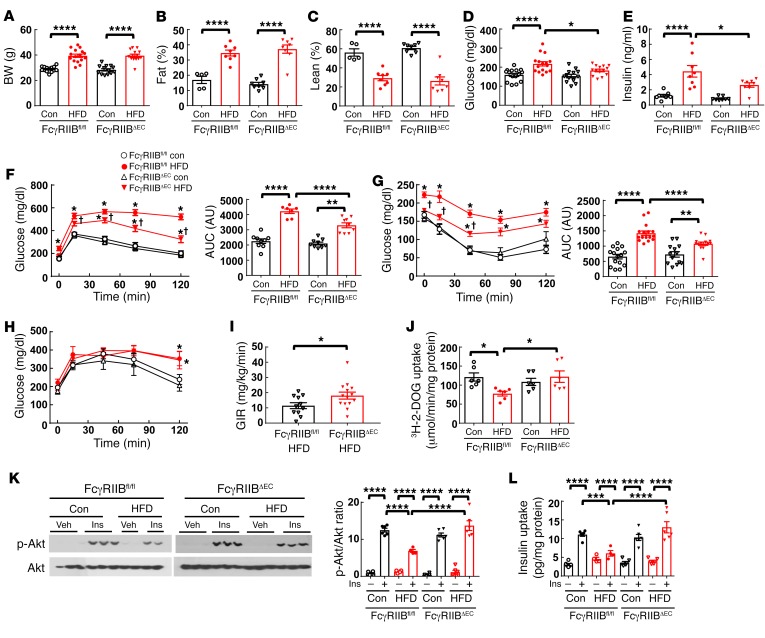Figure 2. Mice with endothelium-specific deletion of FcγRIIB (FcγRIIBΔEC) are protected from obesity-induced glucose intolerance and insulin resistance due to the preservation of skeletal muscle insulin delivery, insulin action, and glucose uptake.
(A–C) Male FcγRIIBfl/fl and FcγRIIBΔEC mice were fed a control diet or a HFD for 12 weeks, and BW (A) and fat and lean mass (B and C) were evaluated. n = 5–13 (A–C). Fasting blood glucose (D) and insulin (E) levels were measured (n = 8–16), and a GTT (F; right panel shows the AUC) was performed. An ITT (G; right panel shows the AUC) and a PTT (H) were then performed, each following a 1-week recovery while mice continued the assigned diets. (F–H) n = 6–13. (I) In separate mice, following 12 weeks on a HFD, a hyperinsulinemic-euglycemic clamp was performed, and the GIR was calculated. n = 11–14. (J) One week after the PTT, the mice in A–H were fasted, and [3H]-2-deoxyglucose uptake in skeletal muscle was measured. n = 7–8. (F–H) *P < 0.05 versus FcγRIIB+/+ control diet; †P < 0.05 versus FcγRIIB+/+ HFD. (K and L) Following 12 weeks on a control diet or a HFD, mice were fasted and i.v. injected with PBS (Veh) or insulin (Ins) (1 unit/kg BW), and 5 minutes later, skeletal muscle was harvested, the phosphorylation of Akt (Ser473) was assessed by immunoblotting (K), and muscle insulin content was measured by ELISA (L). (K and L) n = 4–6. Values represent the mean ± SEM. *P < 0.05, **P < 0.01, ***P < 0.005, and ****P < 0.001, by 1-way ANOVA with Tukey’s post-hoc test (A–E, and I–L), 2-way ANOVA with Tukey’s post-hoc test (F–H), and Student’s t test (I).

